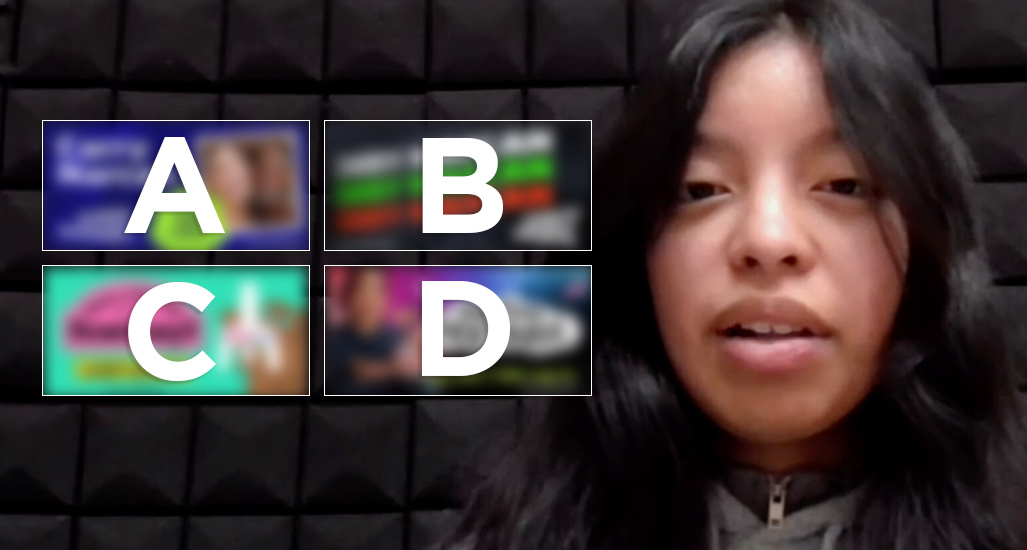
I see it on the streets of downtown as I walk to work. I read about it in the news and feel sick to my stomach. I look at my family member who has overdosed, more than once, and lost many friends to it. And my heart aches. It makes me angry, sad and scared. I think we all have strong feelings when it comes to fentanyl.
The range of emotions that I am feeling about fentanyl are also being felt by high schoolers. And this is on top of the numerous other things teens are already worried about. When we started working with Multnomah County on their youth fentanyl awareness communications, I knew how we approach the work was imperative to the success of the campaign. The last thing we wanted was to come off as insincere or worse, too authoritarian and have the campaign fall flat. We wanted our message seen, heard and absorbed by youth because we knew quite literally, this campaign could be the catalyst that saves a life.
Focus groups: a youth-led campaign
We started by connecting with local teens and hearing what they had to say. We worked in partnership with Multnomah County to conduct focus groups with students from local high schools including Franklin, Reynolds, Jefferson, McDaniel and Access Academy at Meek. We tested four distinct concepts and used youth feedback to inform the rest of the campaign development.
The students were very engaged and excited to talk with us. This was clearly meaningful and important to each of them. Multiple students in our focus groups attend school with students that have overdosed and even died from fentanyl. The testing helped us better understand the students’ knowledge and experiences with fentanyl. We also identified information gaps and learned students wanted facts and resources they could access and share with peers if they knew they were using fentanyl and needed help. They gravitated towards bold graphics that stood out (bright colors), but were also more serious in tone and straight to the point.

With this information, we narrowed in on the theme “Expect Fentanyl.” This campaign name allowed us to speak to a range of youth experiences. If they are a person making risky choices, we can provide them information to be safer; and if they are a person who is not currently using drugs, we want to make them aware of the dangers and fentanyl’s prevalence in non-prescription and illicit street drugs.
Production: a race to the finish line
The campaign was a part of the 90-day emergency declaration, and we were tasked with completing the campaign before the end of the emergency. This meant we had to work fast.
Thanks to our previous work developing a fentanyl prevention campaign for Yamhill, Marion and Polk counties, we were able to meet the county’s hyper-aggressive timeline.
Media mix: phones, near schools and in schools
Reach them where they are: Sixty percent of the media budget was dedicated to audio streaming (Pandora, Spotify) and in-app video on Snapchat, TikTok, Instagram and YouTube targeting teens in Multnomah County. The idea is to show up in places where kids spend the most time – on their phones.
Reach them where they gather: Forty percent went to out-of-home (bus shelters, bus benches and billboards), around local high schools. We also shared posters and content for digital display screens with high schools, student health centers and community partners.


Press coverage: a delightful win
The campaign is currently running and it was a bright spot in the County’s 90-day emergency wrap-up effort. CK supported Multnomah County’s news conference to announce the campaign, which generated 28 news stories, including news outlets from ten other states around the country, from Washington to West Virginia! All four TV stations in the Portland metro area reported on the campaign, as did The Oregonian, Portland Tribune, Capital Chronicle, The Lund Report, and multiple radio stations.
All of us can help
I thought working on this campaign would be especially important but also emotionally challenging. It turned out to give me hope. Hope that teens and adults alike understand and can react to an overdose. Hope that an overdose is less scary when we are prepared for it. And that carrying Naloxone could end up helping to save a life. I recommend everyone keep Naloxone at home as a part of your first aid kit and carry it with you, know how to spot an overdose, and share these messages. We can all, with a little effort, watch out and take care of our friends and fellow people. ❤️